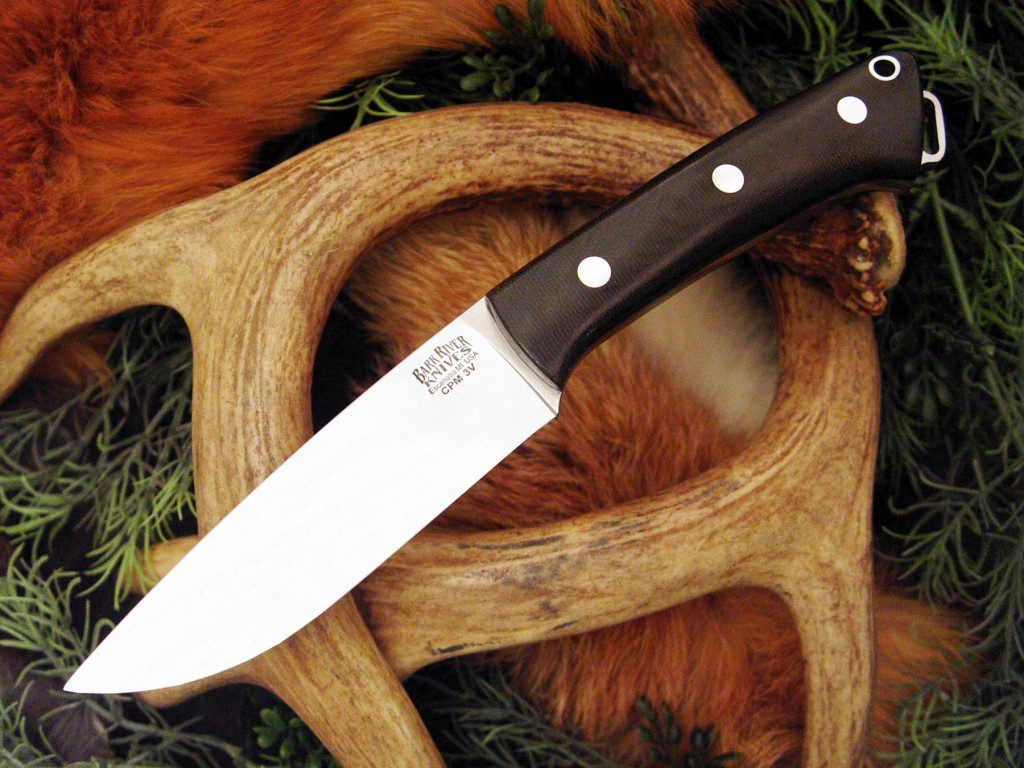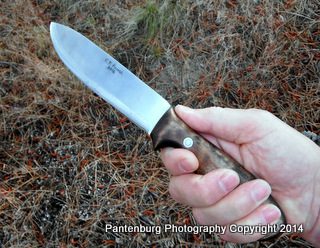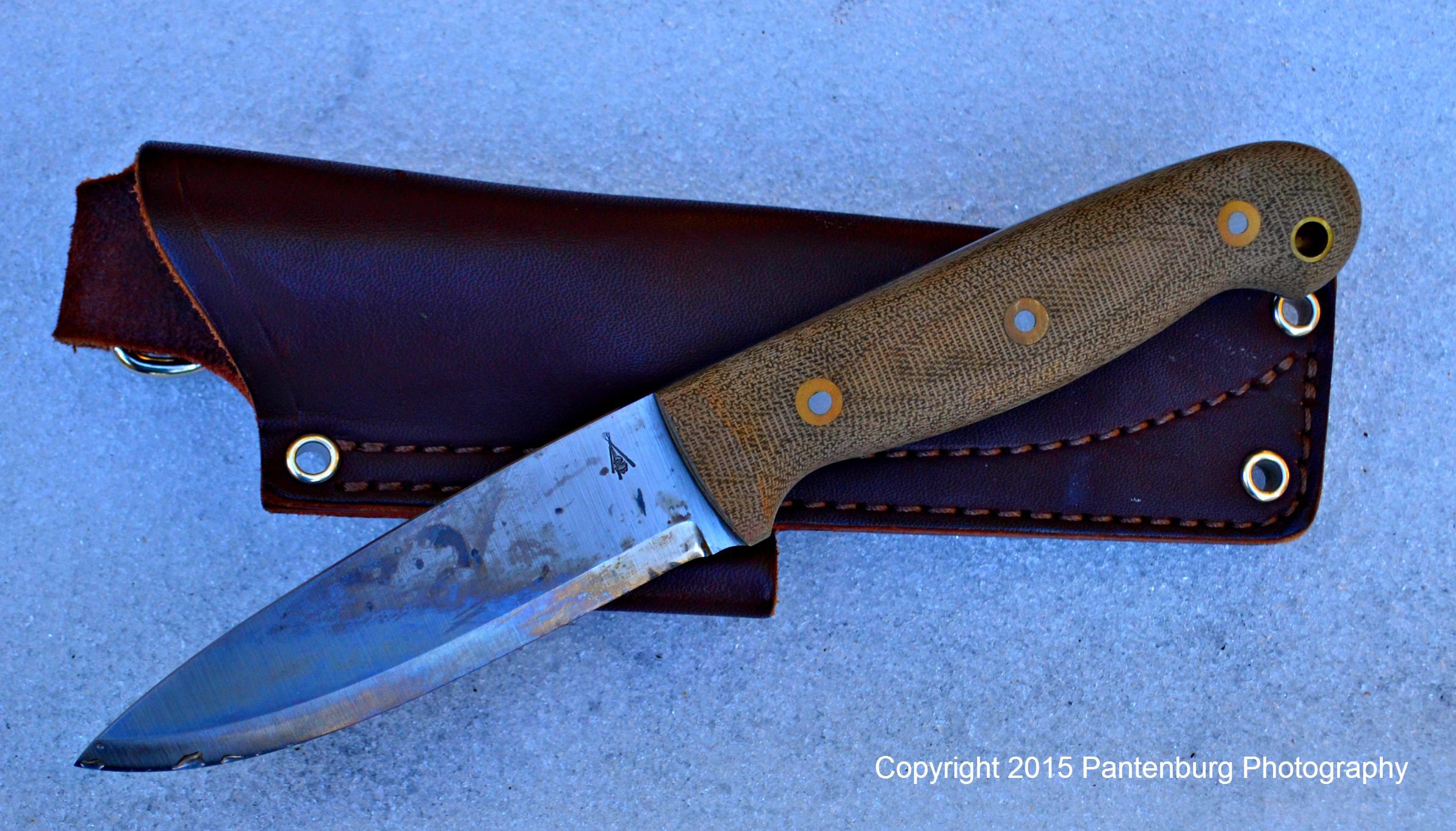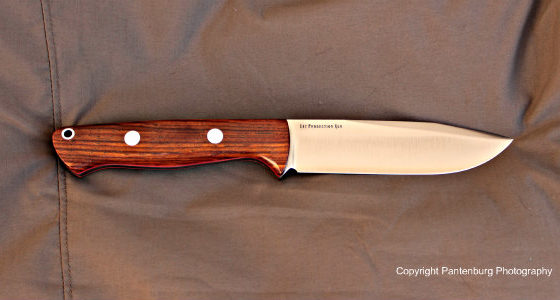I bought this knife to review. At the time of publication Bark River Knives had no affiliation with SurvivalCommonSense.com.
From the archives: The Fox River was one of my first Bark River knife review. Today, some ten years later, I’m a big fan of Bark River knives, and have tested and reviewed some 60. It’s nice to find a company, and products you can rely on.
Everybody should have a good survival/hunting knife. The Fox River, made by Bark River knives, might be a good choice for you.
by Leon Pantenburg
I have a weakness for custom knives, which is totally out of proportion with my ability to buy them. So while I have several C.T. Fischer custom knives, I’m always on the lookout for a high-end, affordable knife that will serve as a survival tool as well as doing a good job as a hunting knife.
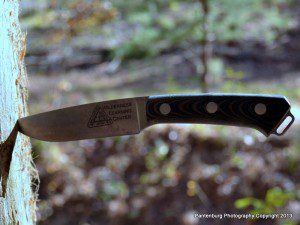
The Bark River Fox River knife. I used this knife for several months, and found it to be a good, reliable product.
I’ve been carrying a Bark River, Fox River model knife for the last several months, and I like it very much. I had intended to gut and skin a deer with it in October or November (2014), but I didn’t kill one.
Any knife I acquire in the survival/hunting category will have to meet some requirements. I want a four-to-five-inch rigid blade with a drop or clip point. Since I generally hunt in fairly isolated areas, weight and versatility are issues. The knife will have to do it all, from gutting the downed animal, to skinning and quartering. The knife shouldn’t need sharpening very often, but when it does, the edge should be restored quickly and easily.
These standards come from field experience and personal bias. It’s surprising how many knives can’t meet these minimal requirements.
The Fox River met those standards. Here’s a little info about Bark River Knives. The company is a family-owned business located in Michigan’s Upper Peninsula. Bark River emphasizes maximum product performance, according to their website, using a blend of traditional and contemporary designs and styles. Manufacturing methods are also a blend of modern and traditional.
To produce top performing knives requires the right combination of the finest grade of materials, skilled craftsmen, efficient and time tested manufacturing methods and strong knowledge leadership, according to Bark River.
Here are some features, Bark River claims, that guarantee a high-quality fixed blade knife:
• Double quenched for maximum grain refinement • Triple tempered for maximum grain refinement
• Cryo-treated for maximum stress relief
• Convex ground to a sharp, hair shaving edge
• Ergonomic handle designs for ease of use.
• 100 percent American-made (That part is huge for me.)
• Lifetime Guarantee: If you have any problem with your knife, just return it to Bark River Knife & Tool Co. and they will repair or replace it.
Here are the Fox River specs:
Overall Length: 8.25″
Blade Length: 4″
Blade Steel: CPM3V
Steel Thickness: .170in/4.3mm
Weight: 5.8 oz
Hardness: 59-60RC
I ordered the Fox River that was endorsed by Kevin Estella of Estella Wilderness Learning Center. My first impression out of the box was that the knife was really well-made. Finish is superb, and the knife was razor sharp. I like the design very much and improving on it would be hard.
Initially, the knife was used for kitchen duties at a couple of camps and it performed flawlessly for the meat and vegetable slicing tasks. I also whittled some sticks for firestarting and used it for general utility cutting.
I saw no need or purpose for batoning firewood with the blade, even though it would have done very well. Batoning wood is no indication of good knife design. A butter knife can be used with the right technique.
I had to work to dull the blade, even a little. Finally, I deliberately dulled the blade, but a few swipes with my Grandpa’s butchering steel easily restored the razor edge.
The leather sheath is made by Sharpshooter Sheath Systems, and it is high quality. The sheath looks incredibly sturdy, and there is no question it will withstand years of hard use.
I had to be really nit-picky to come up with much I didn’t like about the Fox River. And most of these “complaints” have to do with my personal preferences.
- I wear size large gloves, which is pretty typical for males of my height and weight. I was raised in the trades, and worked hard core manual labor growing up on an Iowa farm. The handle felt a trifle small to me for extended use. For my use, the handle needs to be longer.
- I like a full tang knife, but the jury is still out in this extended tang. While I didn’t have any problems with it, I don’t see that it fills any purpose that a hole in the handle wouldn’t have. I don’t see the need to pound on things with the pommel of a knife, but I’m also a traditional-type when it comes to knife appearance.
- The Sharpshooter leather sheath is very well made. But the belt loop is too small to fit on many heavy-duty belts. No sheath on the market includes a d-ring in the loop so the knife can be attached to a carabiner or secured to a belt clip. I add this to every knife sheath, and find the system to be secure, safe and handy. Swinging on the d-ring, attached to my belt clip, the Fox River is very handy and comfortable to carry.
Your knife may be the only tool you have with you when a survival situation develops. Find one you like, and you’ll enjoy carrying it. Don’t scrimp or cut corners when it comes to knife choice.
When I shopped for my first survival/hunting knife in 1990, it didn’t seem like there was a lot out there in the affordable quality knife market. I ended up choosing a Cold Steel SRK, and have used it with complete satisfaction. The SRK is in my emergency gear backpack, and I have no plans on replacing it.
But if I would have known about Bark River knives back then, my choice might have been a lot harder. And, now I’ll consider packing a Bark River. And that’s a huge compliment to any knife. Update: I’ve been carrying a Bark River or L.T. Wright knife for hunting, fishing and Bushcraft ever since!
Please click here to check out and subscribe to the SurvivalCommonSense.com YouTube channel -Thanks!

